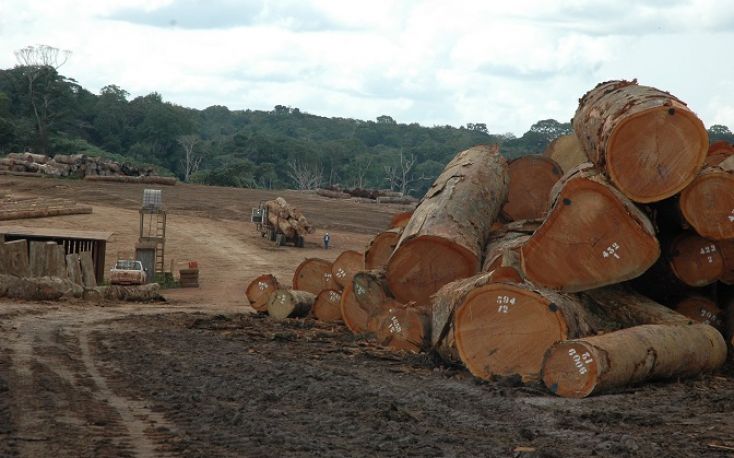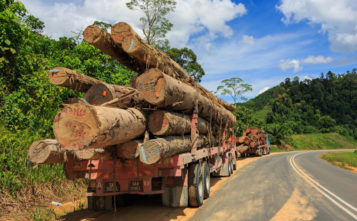Tropical hardwood’s long-held status as the prime material for European fresh and seawater marine applications has been increasingly challenged by alternatives; steel, concrete, recycled plastics, wood-plastic composites, temperate timber species and increasingly, for sea defences, rock armour. Some feel that sustainability concerns - the perceived linkage of marine-use tropical species with deforestation - and also the EU Timber Regulation have also increased trade, end-user and specifier risk aversion and helped drive further use of substitutes.
Despite this, according to comments from the EU trade, tropical timber is still holding its own in the market. It remains a material of choice for sea defences where aesthetics and use of the coast as a public amenity is a priority.
Many specifiers still acknowledge its unique technical performance benefits and its environmental profile is also being improved, albeit slowly, by growing understanding and market recognition of its carbon and life cycle credentials.
However, it is also accepted that the trade cannot be complacent. This is a product area that is already highly lucrative and potentially set to grow more significant if, as some predict, climate change affects water levels and creates more extreme weather patterns, but the consensus is that it is also likely to become ever more demanding in terms of specification requirements and increasingly competitive.
Industry is responding to market developments
There are signs that the industry is responding to market developments and challenges. In particular in the Netherlands, arguably Europe’s leading exponent of the use of wood in marine and broader civil engineering applications, an action plan has been launched to drive timber uptake.
There has also been growing activity to raise awareness in the marine market of the potential of lesser-used or lesserknown tropical timber species (LKTS). The aim is to both relieve pressure on the most popular species, notably ekki/azobe and greenheart, and also to increase the palette of materials available to specifiers and potentially increase timber’s range of marine applications.
At the same time, say researchers, this area urgently requires significantly increased funding from the timber sector, both importers and suppliers, to generate the performance data needed if these lesser known varieties are to make progress and help combat the advance of rival materials in the timescale required.
Trade feedback is that the European marine products market this year has actually been steady to slowly growing, reflecting wider economic growth and increased government spending on infrastructure projects generally.
It’s reported too that there has been a trend towards the private sector becoming the key marine timber buyer, although one Dutch importer/distributor said this ‘goes in phases’. “Currently a lot of public sector work is also tendered as a project, and as such marine timber is bought by the contractor,” they said.
A UK buyer also said some of the country’s public agencies have migrated away from tropical timber generally. “For instance, the Canal and Waterways Trust now specifies only oak for lock gates,” they said.
They also commented that the UK Environment Agency (EA), which has a large measure of control in public marine project materials specification, has a hierarchy of timber use, favouring recycled timber over virgin. “The EA applies this policy to its own purchases and encourages partner projects to do the same,” they said.
They added that the EA also insists its personnel make an “exhaustive business case” for using tropical timber. However another importer maintained that the agency still regards it as one of the foremost materials for marine application, pointing to its guidelines for use of lesser known species to highlight the overall pragmatism of its approach.
“Ultimately,” it states, “the decision about [timber] use will depend on a mixture of technical, environmental and commercial considerations.”
The preference for European public projects, said suppliers, is overwhelmingly for third party certified timber, which in the marine market means FSC-certified due to the lack of appropriate PEFC varieties. But this is also currently tempered with practicality.
Other forms of proof of sustainability and legality are accepted where certified is not available in the quantity or time required. And interestingly, one importer/producer noted a change in this area since the introduction of the EUTR.
“We’ve actually seen a marginal decrease in certification requirements, with more contractors and local authorities accepting solely EUTR compliant, legally verified timber,” they said.
At the same time, another importer said FSC-certification could still act as a ‘passport’ into the European market, as demonstrated by increased interest in Guyanese greenheart since the Iwokrama Forest was certified last year.
“[Guyana supply] has not been entirely smooth, but there has been interest in its certified offering, especially in the UK public sector where lack of certification had impacted demand,” said a Dutch importer.





Leave a Reply